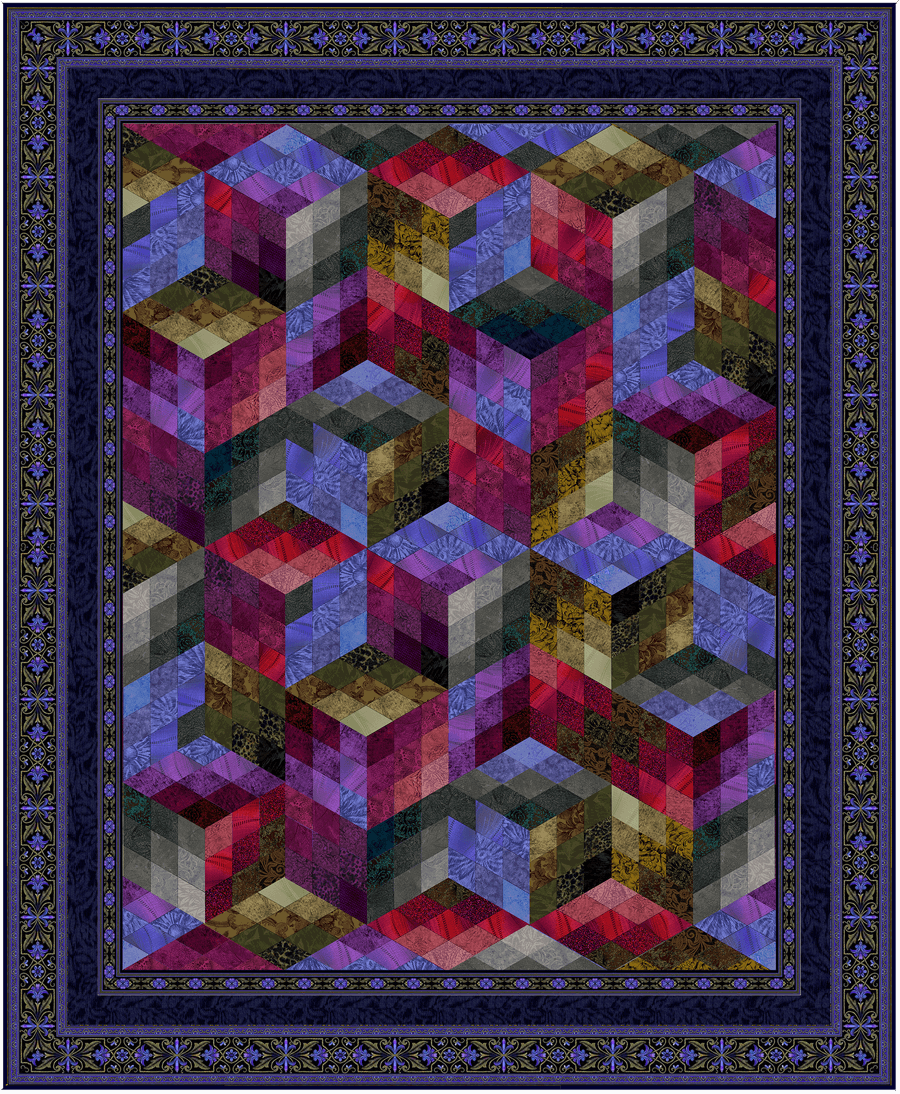

This series of posts on Charm Quilts has generated a lot of interest, comments and questions. We welcome those comments and love to hear what you are working on. For this post we will show more options for creating a charm quilt using squares.
For all my quilts, I like to create a “unit” that repeats over and over to make the entire quilt. Within that unit the shapes are arranged by value, then each unit follows the same “formula.” I make stacks of those units until there are enough for the quilt top.
So perhaps after gathering a lot of fabrics and cutting the shapes the next step is to organize the pieces by value. Your unit may have light and dark values or it might have light, medium and dark values.
This unit is made up of 25 squares. It is a Nancy Cabot design called Building Blocks and I found it in the Jan, 15, 1938 issue of the Chicago Tribune.


In the December 2021 newsletter we featured a Charm quilt made by Kay Sorensen. The 25 square unit is shown here. Four of those are pinwheeled and made into a larger unit and then those repeat for the quilt.


The Irish Chain design has many different variations. This one, called Double Irish Chain is a Laura Wheeler design that I found in the Aug. 6, 1933 issue of the Cincinnati Enquirer.
This is made up of units of 36 squares each. Then those, as in the quilt above are also pinwheeled to get the design.

One of my favorite scrap quilts is this one made entirely of small one inch squares. A portion of this quilt is shown at the beginning of this blog. While this is not a charm quilt with all the squares different, it does have a lot of different fabrics and it would be fun to accept the challenge of making all the squares all different for a true charm quilt. The quilt contains 49 of the units explained below and with 81 squares per unit, that makes 3,969 squares in the quilt. The full unit is shown here, but if I were making this, I would break it down into three separate 9-patch units.

Unit 1: Nine squares with three lights diagonally across the middle, four required for the larger unit.
Unit 2: Center 9-patch square with five lights and four mediums, one required for each unit.
Unit 3: Nine square with all medium and dark fabrics sewn together randomly
Then these units could be arranged for the larger square.
There are hundreds of ways squares can be organized to create an interesting design. Why not try your own?
See this months’ newsletter and the two previous blog posts for even more ideas for working with squares to create a charm quilt.
































































